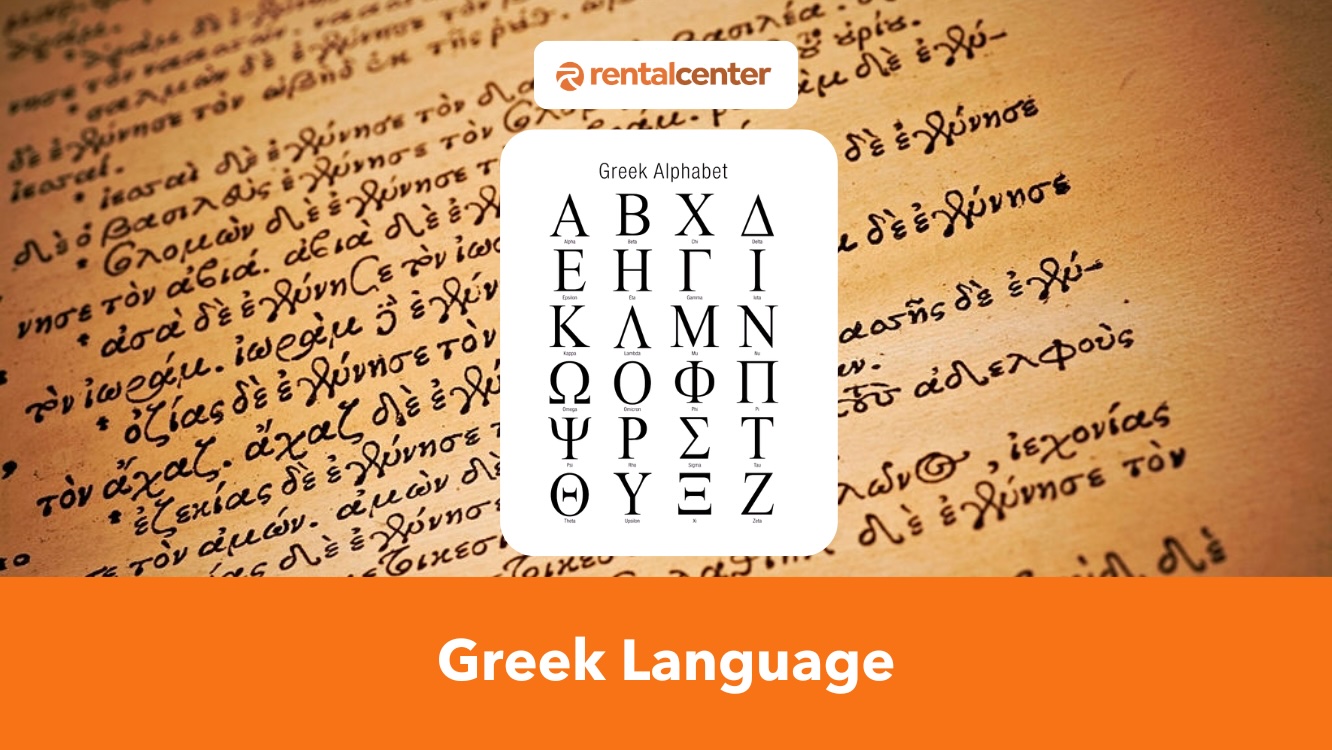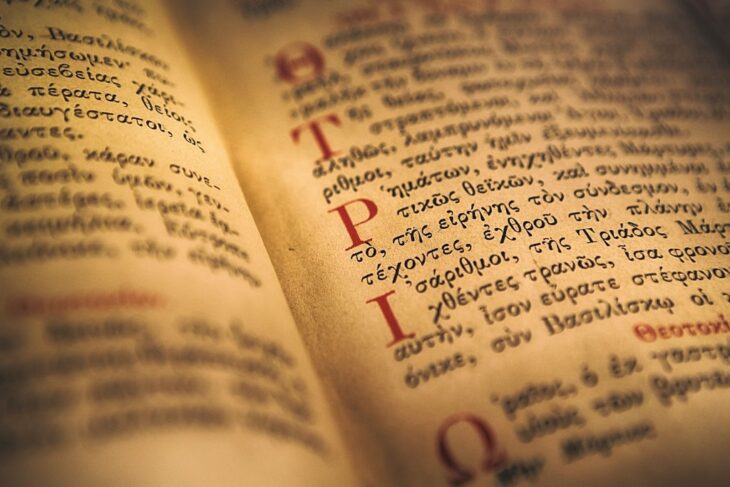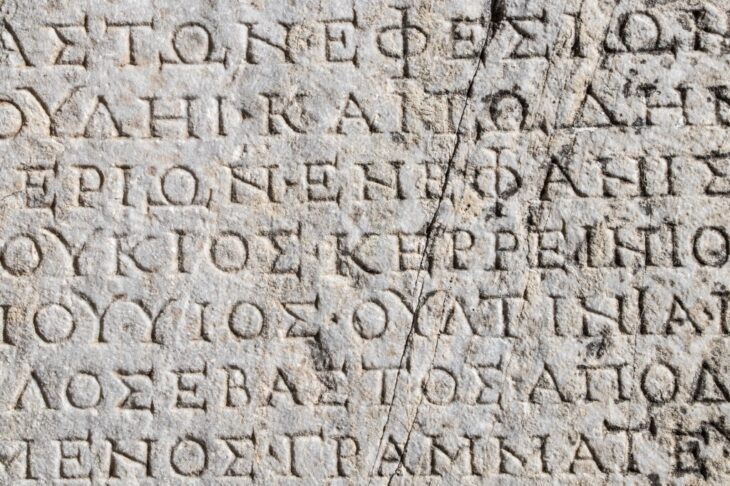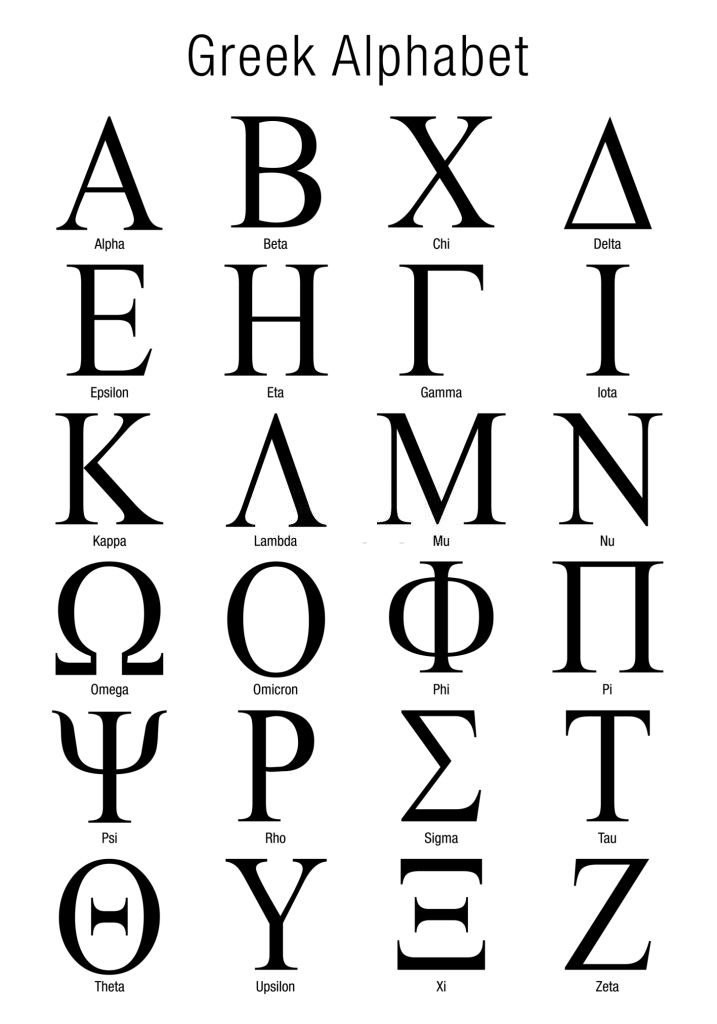Greek Language: Facts, History, Structure and Culture

Greek, one of the oldest recorded Indo-European languages, dates back to the 15th century BCE. Modern Greek, the official language of Greece, evolved from Ancient Greek and has been in use since Greece’s independence in 1829.
Greek, a highly inflected language, has a rich grammatical structure and notable dialects, including Cretan, Pontic, and Tsakonian. Its alphabet, with 24 letters, defines its identity.
Greek, while rooted in tradition, incorporates loanwords and expressions, reflecting historical interactions with diverse cultures. This adaptability highlights its dynamic evolution.
Greek serves central roles in administration, education, and daily life in Greece. Learning Greek offers insights into one of the world’s oldest linguistic and cultural traditions.
What is the Official Language in Greece?
The official language of Greece is Modern Greek, or Demotic Greek, a descendant of Ancient Greek. Modern Greek has been the language of Greece since its independence in 1829. It is used universally in official documents, government, and daily life. Ninety-nine percent of Greece’s population speaks Modern Greek, and 13.5 million native speakers worldwide, including Cyprus and the diaspora, speak it.
In addition to Modern Greek, several minority languages are spoken in Greece, including:
- Albanian (443,000 speakers)
- Turkish (50,000–60,000, mainly in Western Thrace)
- Macedonian (41,000 speakers)
- Bulgarian (41,000 speakers)
- Romani (160,000 speakers)
English is the most commonly spoken foreign language, with about 51% of Greeks able to communicate in it, especially in urban and tourist areas.
What are the native Languages of Greece?
Greek linguistic diversity includes several native languages and dialects. Native Greek dialects include:
- Cretan Greek (spoken by over 500,000)
- Pontic Greek (spoken by about 500,000)
- Thracian Greek (spoken in Western Thrace).
- Tsakonian Greek (spoken1,200 speakers in the Peloponnese)

What are the forms of the Greek Language?
The Greek language comprises Ancient, Medieval, and Modern forms. Ancient Greek included dialects such as Attic, Ionic, Doric, and Aeolic. Medieval Greek, derived from Koine, spanned the 5th to 15th centuries. Modern Greek encompasses Demotic, the vernacular, and regional dialects like Cretan and Cypriot Greek, each with distinctive features.
Who regulated the Greek Language?
The Greek language was regulated primarily through state policies after independence in 1829. Adamantios Korais influenced early reforms with Katharevousa, a blend of Ancient and vernacular Greek. The government adopted Demotic Greek in 1976, as the official language for education and administration, forming the basis of Standard Modern Greek.
Adamantios Korais proposed Katharevousa, a “purified language” blending Ancient Greek with contemporary vernacular. In the 20th century, the language debate became politically charged. Advocates of Demotic emphasized its accessibility and reflection of the people’s speech, while supporters of Katharevousa viewed it as essential for preserving Greek heritage.
The dispute caused significant unrest, including riots and academic conflicts. In 1976, the government resolved this divide by adopting Demotic Greek as the standard language for education and administration.
Today, Standard Modern Greek, derived from Demotic, serves as the official language of Greece, unifying its historical heritage with practical contemporary use.
What is the history of the Greek Language?
The Greek language, with a history spanning over 3,400 years, is one of the oldest continuously spoken languages in the world and a member of the Indo-European language family.
The earliest form, Mycenaean Greek, appeared around 1400 BC, written in the Linear B script, marking the beginning of recorded Greek history. After the collapse of the Mycenaean civilization around 1200 BC, Greece entered a period of obscurity until the 8th century BC, when the Greek alphabet, derived from the Phoenician script, revived literature and documentation.
During the Classical period (5th–4th centuries BC), Attic, Ionic, and Doric dialects dominated. Alexander the Great’s 4th-century BC conquests established Koine Greek as a lingua franca across the Eastern Mediterranean, shaping significant texts like the New Testament.
The 1453 fall of Constantinople and Ottoman rule spurred Dimotiki’s vernacular evolution, while Katharevousa, an archaic form, emerged as Greece’s formal language after independence in 1829.
How old is the Greek Language?
The Greek language is over 3,400 years old, originating from Proto-Greek around 2000 BC. Its earliest form, Mycenaean Greek, appears in 15th-century BC inscriptions. Greek evolved through Medieval Greek during the Byzantine era and transitioned into Modern Greek. It remains one of the world’s oldest continuously spoken languages.

How is the Phonology of Greek?
Greek phonology features five primary vowel phonemes (i, u, e, o, a), simplifying the ancient long-short vowel distinctions. Consonants include stops (p, t, k), fricatives (f, v, θ), and nasals (m, n). Modern Greek retains a streamlined sound system, evolving from the complexity of its ancient form while maintaining clarity and distinct articulation.
How is the Grammar of Greek?
Greek grammar is inflectional, with flexible sentence structure. It employs four grammatical cases: nominative for subjects, genitive for possession, accusative for direct objects, and vocative for addressing. Nouns and adjectives agree in gender, number, and case, reflecting a highly structured system that governs relationships between words.
Verbs are conjugated by tense, mood, voice, person, and number, with distinct forms for present, past, and future actions. Although the typical word order is Subject-Verb-Object (SVO), variations occur based on emphasis or style, supported by the inflectional system.
How is the Language Policy of Greece?
Greece’s language policy emphasizes standardization and inclusivity. Demotic Greek, established as the official language in 1976, replaced Katharevousa, resolving historical diglossia. The Ministry of Education prioritizes Greek in education while addressing immigrant and minority language needs. Early foreign language instruction and multilingual policies highlight a commitment to cultural and linguistic diversity.
Greece has acknowledged the importance of multilingualism, particularly with rising immigration. Policies now support minority language teaching while maintaining Greek as the primary language of instruction. Recent initiatives emphasize early foreign language instruction, reflecting a commitment to linguistic inclusivity.
Is Greek a Pure Language?
Greek is not considered a “pure” language due to its evolution over centuries, incorporating influences from languages like Turkish, Italian, and English. Modern Greek retains its ancient foundations while reflecting external linguistic adaptations, making it a dynamic and historically rich language.
Is Greek a Romantic Language?
Greek is not a Romantic language. It belongs to the Hellenic branch of the Indo-European language family, distinct from the Romance languages like Spanish, French, and Italian, which evolved from Vulgar Latin. Greek has a separate linguistic and historical development rooted in Proto-Greek.
Is Greek a Dead Language?
Greek is not a dead language. Ancient Greek is classified as a dead language because it has no native speakers, but Modern Greek is actively spoken by about 13 million people worldwide. Modern Greek evolved from Ancient Greek, maintaining linguistic continuity while adapting for modern communication.
Is Modern Greek the same as Ancient Greek?
Modern Greek and Ancient Greek differ significantly, although they belong to the same linguistic continuum. Ancient Greek (9th century BC to 6th century AD) featured complex grammar, including a dual number for nouns and an extensive system of verb conjugations. Modern Greek, shaped by changes during the Byzantine era and after 1453, is simplified in grammar and phonetics. Modern Greek uses four grammatical cases (nominative, genitive, accusative, vocative) and has lost features like the dual number. It also incorporates vocabulary influenced by other languages.
How is the Greek Alphabet?
The Greek alphabet, developed in the late 9th or early 8th century BC, was derived from the Phoenician alphabet and became the first alphabetic script to include distinct letters for vowels and consonants. It consists of 24 letters, each with uppercase and lowercase forms:
Alpha (Α, α), Beta (Β, β), Gamma (Γ, γ), Delta (Δ, δ), Epsilon (Ε, ε), Zeta (Ζ, ζ), Eta (Η, η), Theta (Θ, θ), Iota (Ι, ι), Kappa (Κ, κ), Lambda (Λ, λ), Mu (Μ, μ), Nu (Ν, ν), Xi (Ξ, ξ), Omicron (Ο, ο), Pi (Π, π), Rho (Ρ, ρ), Sigma (Σ, σ/ς), Tau (Τ, τ), Upsilon (Υ, υ), Phi (Φ, φ), Chi (Χ, χ), Psi (Ψ, ψ), Omega (Ω, ω).

What language do they speak in Greece?
The official language of Greece is Modern Greek, a direct descendant of Ancient Greek. Regional dialects such as Cretan, Tsakonian, and Pontic Greek also exist. Minority languages include Albanian, Turkish, and Macedonian, spoken by specific communities due to Greece’s multicultural history.
1. German in Greece
German is spoken by about 9% of the population. It is often learned in schools and popular among those pursuing careers in business or tourism. Germany’s economic ties with Greece and the influx of German tourists bolster its presence.
2. Italian in Greece
Italian is spoken by about 8% of Greeks, reflecting historical and cultural ties between Italy and Greece. It is a common choice in schools and is valued for its connection to art and history.
3. Dutch in Greece
Dutch is less commonly spoken in Greece, with no specific statistics available. Expatriates and some students primarily talk about it. The Dutch community is small but contributes to Greece’s linguistic diversity.
4. French in Greece
French is spoken by approximately 8.5% of the population and remains a popular foreign language in schools. France’s cultural influence and appreciation for French literature and cinema encourage its study.
5. Spanish in Greece
Spanish has a smaller presence in Greece compared to other foreign languages but is gaining popularity among students. Its status as a global language makes it appealing to those interested in international communication and culture.
6. Albanian in Greece
Albanian is the largest minority language in Greece, spoken by approximately 443,000 people due to immigration from Albania since the 1990s. Some Albanians in Greece are descendants of earlier settlers and speak Arvanitika, a distinct dialect facing assimilation challenges among younger generations.
What are Greek Names?
Greek names are historically and culturally significant. They can be categorized into various types with characteristics and meanings. Here are some examples of Greek names:
- Sophia: Wisdom
- Nikolaos: Victory of the people
- Dionysios: Related to Dionysus
- Apollonios: Related to Apollo
- Leonidas: Son of the lion
- Demetrios: Follower of Demeter
- Theodoros: Gift of God
- Maria: Beloved
- Elena: Shining light
- Alexandros: Defender of men
- Agatha: Good
- Eirene: Peace
- Katerina: Pure
- Aikaterine: Ancient form of Katherine
- Achilles: Warrior hero from mythology
What are some famous Greek words?
Greek has contributed many words to the English language and other languages. Here are some famous Greek words:
- Democracy: From demos (people) + kratos (power), meaning government by the people.
- Philosophy: From philosophia, meaning “love of wisdom.”
- Tragedy: From tragodia, referring to a serious drama involving a great person destined for downfall.
- Academy: Named after the grove where Plato taught, now refers to institutions of higher learning.
- Hygiene: Derived from Hygieia, the goddess of health.
Other notable Greek words include:
- Kefi: Spirit of joy and enthusiasm.
- Meraki: To leave a piece of yourself in your work.
- Thalassa: Sea.
- Ataraxia: A serene state of calmness.
- Kalokeri: Summer.
What are the steps of learning the Greek Language?
Learning Greek can be rewarding, offering insights into one of the world’s oldest and most influential languages. Here are the steps to guide you through the process:
- Step 1. Define Your Language Learning Objectives: Identify why you want to learn Greek (travel, career, cultural interest) and set clear, specific goals.
- Step 2. Set Realistic Goals and Expectations: Break your learning into manageable milestones, such as mastering the alphabet, basic vocabulary, or holding simple conversations.
- Step 3. Create a Language Study Schedule: Dedicate consistent, regular time to studying Greek to build momentum and effectively retain information.
- Step 4. Master the Greek Alphabet and Pronunciation: Learn the 24 letters of the Greek alphabet and their sounds to establish a foundation for reading and writing.
- Step 5. Learn Essential Greek Phrases and Vocabulary: Start with standard greetings, expressions, and everyday vocabulary such as “Γειά σου” (Hello) and “Ευχαριστώ” (Thank you).
- Step 6. Study Basic Greek Grammar: Focus on noun cases (nominative, genitive, accusative, vocative) and verb conjugations in different tenses (present, past, future).
- Step 7. Practice Listening and Speaking: Engage with native speakers through language exchange platforms or practice speaking aloud to improve fluency and confidence.
- Step 8. Read Greek Texts: Start with simple or children’s books to build reading comprehension and vocabulary.
Is there a course to learn Greek?
Yes, there are numerous courses available for learning Greek, both online and in-person. The courses to learn Greek are listed below:
- E-Kalimera
- Hellenic Centre
- Preply
- Online Platforms
Are Greek and English similar to each other?
Greek and English are not similar as they belong to different branches of the Indo-European language family. English is a Germanic language, and Greek forms its branch.
Greek retains complex grammatical features such as noun cases (nominative, genitive, accusative) that English has primarily dropped. Although many English words are derived from Greek (especially in scientific and technical fields), the core vocabulary and structure of the two languages differ significantly.
Is there a Greek Sign Language?
Yes, the deaf community in Greece uses a distinct Greek Sign Language (GSL).
GSL has been legally recognized as the official language for educational purposes since 2000. It is estimated that between 40,000 to 60,000 people use GSL in Greece.
GSL has its own grammar and syntax that differ from spoken Greek. The language incorporates hand signs, facial expressions, and body movements to convey meaning effectively.
How is the Greek Language in Literature and Art?
The Greek language has a profound legacy in literature and art, tracing back to ancient times. Greek literature began with epic poetry, notably the works of Homer, such as The Iliad and The Odyssey, which have influenced countless authors throughout history.
The Greeks also pioneered drama, with playwrights like Sophocles, Euripides, and Aristophanes shaping the foundations of Western theatre. The themes explored in Greek literature often revolve around mythology, philosophy, and human experience, making it a cornerstone of Western culture.
In art, Greek contributions are equally significant; ancient Greek sculpture and pottery are famous for their beauty and realism, showcasing the human form in ways that continue to inspire artists today.
Is Greek spoken only in Greece?
No, Greek is not spoken only in Greece. It is the official language of Greece and is spoken by 99% of its population. Greek is also an official language in Cyprus, and about 1.2 million people say it. There are smaller Greek-speaking communities in countries such as Albania, Italy (particularly in regions like Apulia and Calabria), the United States (with around 264,000 speakers), Australia, Germany, and other parts of Europe due to historical migration patterns.
Is it easy to learn Greek?
Learning Greek can be challenging for English speakers because of its complex grammar, including noun cases like nominative, genitive, and accusative, along with intricate verb conjugations. The unique alphabet also requires initial effort to master. Despite these challenges, consistent practice and exposure can make Greek accessible over time.
The Greek alphabet differs from the Latin alphabet used in English, requiring learners to familiarize themselves with new characters. Some sounds in Greek do not exist in English, making pronunciation difficult for beginners.
However, with dedication and consistent practice, many learners find it rewarding. The Foreign Service Institute (FSI) categorizes Greek as a Category IV language, suggesting that English speakers typically require around 1,100 hours of study to achieve proficiency.
How to say “Hello” in Greek?
The most common way to say “Hello” in Greek is:
- Γεια (Ya): This can be used for any occasion.
For more formal situations or when addressing multiple people:
- Γεια σου (Ya su): Used when greeting one person.
- Γεια σας (Ya sas): Used for greeting more than one person or in formal contexts.
Are there poets who use Greek?
Yes, many famous poets write in Greek. Find below a list of the notable poets in Greek:
- Homer: Author of the epic poems Iliad and Odyssey.
- Sappho: A lyric poet from Lesbos known for her emotional poetry.
- George Seferis: A Nobel Prize-winning poet whose work reflects modern Greek identity.
- Odysseas Elytis: Another Nobel laureate known for his romantic poetry celebrating Greece’s landscape and history.
- Angelos Sikelianos: A prominent 20th-century poet who explored Greek history and spirituality themes.
Are there any good Greek Movies?
Yes, Greece has a film industry producing classic and contemporary films. Find below a list of the notable greek movies include:
- Stella (1955)
- Never on Sunday (1960)
- The Travelling Players (1975)
- Rembetiko (1983)
- Zorba the Greek (1964)
Are there any good Greek Songs?
Greek music is diverse and integral to the culture, encompassing various genres such as folk music (Demotiko), rebetiko, and modern pop. A list of some famous greek songs are found below:
- Τα παιδιά του Πειραιά (The Children of Piraeus)
- Μες σ’ αυτή τη βάρκα (On This Boat)
- Misirlou
- Κάπου υπάρχει η αγάπη μου (My Love Must Be Somewhere Out There)
Last updated on January 5th, 2025














